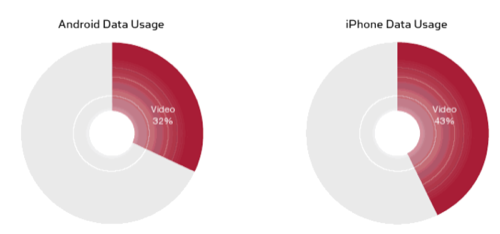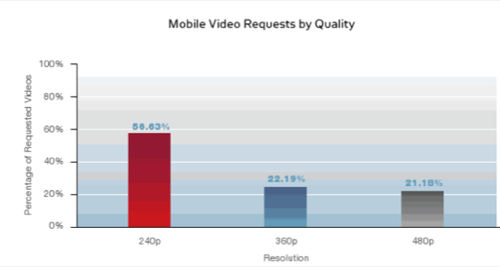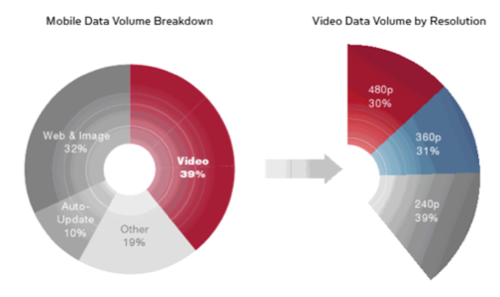Mobile video optimization firm Bytemobile has just released its most recent “Mobile Minute Metrics” report, a look at wireless users’ video consumption trends and behavior based on metrics from a cross-section of nearly 2 billion Bytemobile customers in 58 countries around the world.

According to the new report, which focuses on Q3 2010 mobile traffic, mobile operators are seeing “unprecedented” levels of mobile data traffic, an increase heavily impacted by increased demand for video. Some interesting stats were revealed, too – like whether it’s Android or iPhone users who watch more video, what sites get the most views and more.
Bytemobile found that, on a per-user average, it’s iPhone users generating the most video traffic. 42% of total data traffic generated by the iPhone is video, while only 32% on Android is video.

The most popular and most watched videos are still those coming from user-generated content sites like YouTube and Google Video, which account for 48% of total network video traffic. The second-largest category of video is adult content, accounting for 30% of total traffic. Combined, these two categories – user-gen and adult – make up nearly 80% of total video traffic.
As in last quarter, users are still opting for lower-quality videos (240p) to minimize stalling and other bandwidth-related issues. HD video is currently requested a third less often than low-res video, but generates a similar amount of data traffic – 31% compared with 39%. This means that even a small increase in HD video consumption leads to a significantly greater increase in network traffic load, the report notes.


Not surprisingly, when network speeds increase, video traffic also increases. Case in point: Right now, wireless networks with slower end-to-end speeds only see an average of 39% of their total data traffic as video-generated, while faster networks see nearly 60%.
Video viewing peak hours are now no longer daytime, but evening – a shift that indicates a transition from business usage to residential, entertainment-based usage, says Bytemobile. Mobile data usage, however, occurs during all waking hours (9 a.m. to midnight), with traffic patterns that reflect the number of users on the network at any given time.









